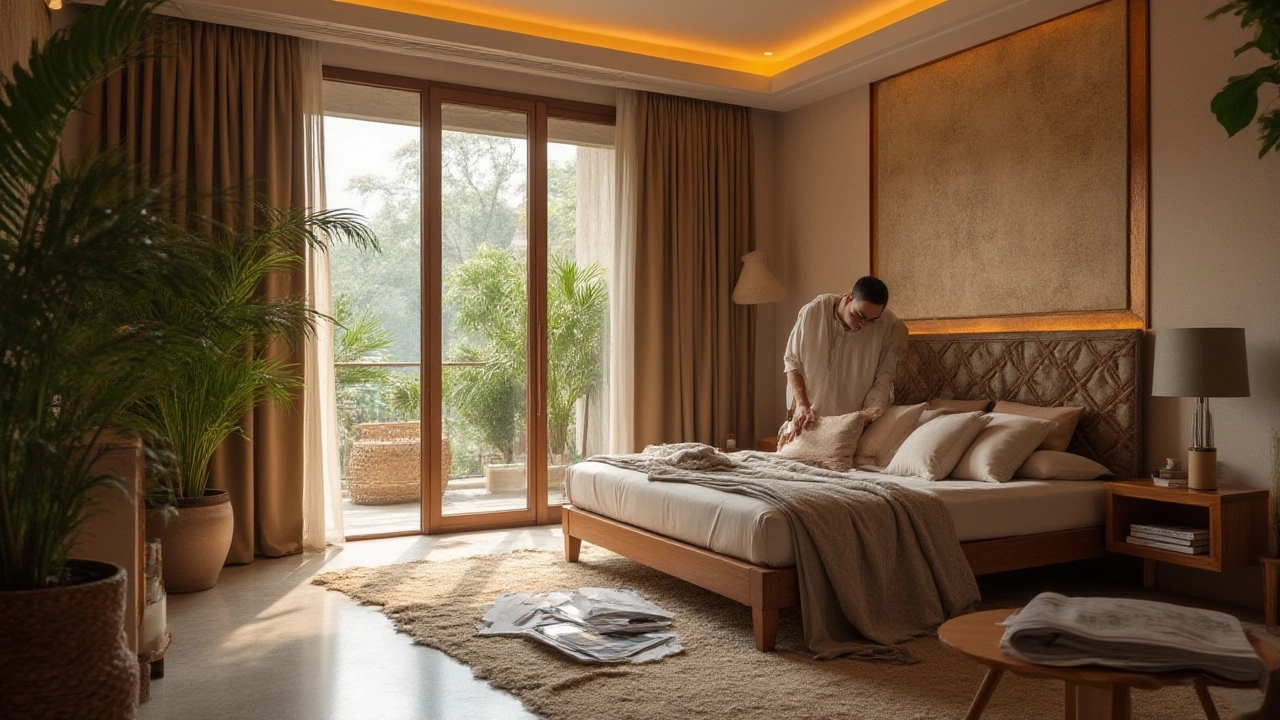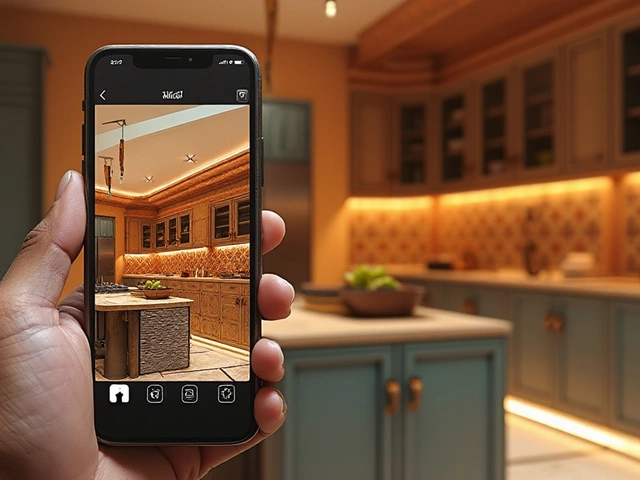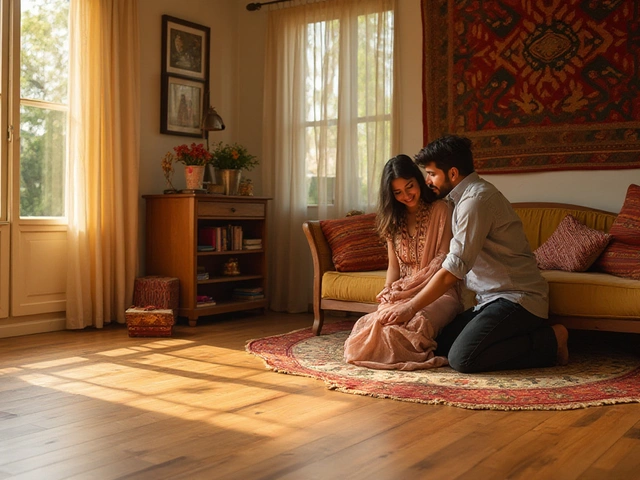Ever walk into a bedroom and just get a weird vibe, almost like you’re being watched? It could have a lot to do with where the bed sits—especially in relation to the door. The way your bed faces the entrance isn’t just a quirk of personal style or random furniture shuffling. It actually taps into some pretty deep ideas about comfort, safety, and design. Cultures for centuries have obsessed about this—sometimes for reasons that sound straight out of a spy novel, other times out of common sense. Today, designers, sleep researchers, and feng shui fans all have an opinion about where your bed should be. But whose advice actually lines up with what feels best when you turn out the lights?
Why Do People Care If the Bed Faces the Door?
You might have heard about the so-called 'coffin position.' It’s one of those spooky-sounding ideas that gets thrown around when someone walks into a room and notices the bed lines up directly with the door. According to Chinese tradition, it’s bad luck — something about spirits whisking people out feet-first, like in a funeral. That mythology actually stuck because, on a basic level, folks want to feel safe and in control while they sleep. In one large survey done by the National Sleep Foundation, over half of the respondents said how they arrange their bedroom furniture influences whether they sleep soundly or toss and turn.
Imagine trying to relax if your toes point right out the door, every noise in the hallway giving you a start. That primal, jittery feeling? It’s not just superstition. Experts in environmental psychology say the brain is wired to want 'command positions' — where you see the main entrance, so you can react if anything unexpected happens. Ancient cultures, soldiers, even hoteliers today set up sleeping areas so guests could always monitor the doorway. It’s less about ghosts, more about our built-in survival instincts.
But that’s just one piece of the puzzle. The popularity of feng shui—the Chinese art of arranging living spaces for harmony and flow—has led a lot of people to rethink bed placement. Feng shui says energy (chi) rushes in through doorways, and if your bed is right in the line of fire, you’re just asking to feel restless. The advice is clear: don’t let your bed directly face the door, especially not with your feet pointing out. (There’s a whole category for 'bed facing bathroom door,' too. That’s considered bad news in the feng shui world.)
Western designers aren’t blindly following ancient rules, but you’ll notice a trend when watching home makeovers: the bed should have a solid wall behind it, far enough from the entrance so you don’t feel exposed, and so you don’t block any natural pathways for moving around.
Of course, not everyone has the luxury of a huge master suite. City apartments and oddly-shaped rooms can make this advice seem impossible. But the point—the reason so many cultures care about where the bed faces—remains the same. We all crave a spot that lets us relax, keep watch, and get a good night's rest.
What Do Sleep Studies and Science Say?
All those traditions might sound quirky, but there’s some modern science that backs them up. Research from the University of Pittsburgh found people sleep more deeply and report fewer night awakenings when their bed is positioned so they can see the door but not have their feet in direct alignment with it. They called it the 'command position,' echoing old feng shui wisdom without any mystical jargon.
Studies mapping eye movement and brain activity during sleep also suggest that people feel more secure when facing an entrance from their bed, especially if they’re not squarely in the path of traffic. Safety signals in the brain dull down; cortisol (that stress hormone that keeps you on edge) drops, making it easier to slip into restorative deep sleep. That’s pretty important: deep sleep is the part where your brain does most of its healing and memory processing.
On the flip side, people positioned directly in line with the door often reported waking up more easily and moving around at noises during the night, according to a Stanford Sleep Lab study. Even though most bedrooms today aren’t open to wild animals or burglars, our brains haven’t quite caught up.
If you check reports from professional interior designers, many say new clients complain about never feeling relaxed in their room or wake up instantly at the slightest sound if their bed faces the door. Changes in layout often help, sometimes more than changing the mattress or lighting.
The National Sleep Foundation’s data table shows just how much these little changes can help. Look at this:
| Bed Placement | Average Sleep Quality (1-10) | Reported Night Awakenings Per Week |
|---|---|---|
| Facing Door (feet aligned) | 5.6 | 6.1 |
| Command Position (facing, but not aligned) | 7.9 | 2.8 |
| Back to Door | 6.0 | 5.7 |
Even though there will always be outliers, these numbers show a pretty solid trend. Where your bed points makes a measurable difference in how well you rest at night.

Feng Shui: The Art—and Science—of Bed Placement
If you Google 'bed facing door,' you’ll drown in feng shui diagrams. This isn’t just some Pinterest trend. Feng shui has been applied in homes, offices, hotels—even hospitals—since ancient times in Asia, and recently gained global traction. The basic rule? Avoid placing your bed directly in line with the door. Instead, place it diagonally across, so you see the entrance but do not line up your feet with it.
Feng shui aficionados believe that energy entering through the doorway (chi) can disturb your sleep, and that you should always be able to see who’s coming in—even if it’s just your partner bringing in coffee. For those in tight spaces, feng shui offers a list of clever fixes:
- Put a small bench or chest at the foot of your bed to symbolically 'block' the path from door to bed (and provide extra storage).
- Use a solid headboard, preferably made of wood or upholstered, to give a grounded, protective feeling—even if your bed has to face awkwardly.
- If you’re stuck with no choice but to sleep directly facing a door, place a crystal, plant, or piece of furniture halfway between the bed and the entrance to 'divert' or slow down the energy.
- Avoid mirrors that directly reflect the bed and the door at the same time. The belief is they bounce energy around and can make a room feel unsettled (and hey, nobody loves waking up to their own startled reflection at 3 a.m.).
Even if you’re not convinced by the spiritual side, a lot of these tips boil down to common sense design: cozy headboards, avoiding big drafts from the door, and keeping tabs on entry points all just make a bedroom feel more comfortable.
In homes where bedrooms are weirdly shaped—maybe with slanted ceilings or too many doors—feng shui masters recommend dividing the space visually, either with rugs, screens, or furniture arrangements. The aim is always the same: get as close to a sense of safety and balance as possible.
In a well-known study by architect and feng shui expert Terah Kathryn Collins, hotel rooms that followed feng shui-backed rules for bed placement got higher scores for guest satisfaction, with "room layout" frequently called out in positive reviews.
If you’re curious how this would work in your space, try drawing the room’s floor plan and marking the door and potential bed spots. Imagine walking in yourself—where’s the most inviting spot? Nine times out of ten, it’s not dead center with your toes pointing at the exit. Even skeptics usually find themselves gravitating toward the classic 'commanding' setup. That should tell you something.
Tips for Choosing the Best Bed Position in Real Life Rooms
Not all bedrooms can look like those dreamy open suites in glossy magazines, but a few tweaks can help you get the comfort-factor of a professional design. Here’s a simple guide:
- Always try to place the bed so you can see the door with a quick glance, but avoid lining your feet directly with it. Slight angles or having the bed offset works wonders.
- If you must face the door, use a footboard, chest, or bench to "buffer" the flow of energy (and to toss your clothes at night). Think of it as a psychological barrier, too.
- Keep your headboard pushed against a solid wall—don’t float your bed in the middle, unless you’re going for ultra-modern studio vibes and you’re sure you’ll love it in six months.
- Check for drafts. Doors and windows aligned with the bed can make you cold or ruin the coziness, especially if you like to sleep with the AC on or the window cracked.
- Pay attention to natural light; don’t block windows but try not to put the head of the bed right in front of one unless the wall layout forces you.
- Remove clutter by the door—the clearer your walking path, the less you’ll stub your toe during midnight snack runs.
- If space is tight, consider creative room dividers or shelving to add privacy and definition between sleeping and living zones, especially in studios or shared bedrooms.
- Use plants or textiles to soften any harsh lines created by pushing the bed against walls or being forced into an unusual angle.
Still unsure? Try shifting your bed for a week and keep a quick sleep journal. Track your rest, how quickly you fall asleep, and whether you wake up startled. After a week in each spot, the best bed position for you becomes pretty obvious. Your body knows what’s comfortable, even before your brain sorts out the ancient traditions.
One last pro-tip: Pay attention to the real world. Security experts recommend never having your bed right up against the door, in case you need a quick exit. Some couples, especially in small apartments, arrange beds so both partners can get out easily—it just makes getting up before dawn less of a wrestling match. This approach is less about ancient wisdom and more about not tripping over your own feet at the worst possible time.
Your bedroom is where you unwind, shut out the world, and (ideally) process all the chaos of the day. Don’t overthink the rules—but also don’t ignore those moments where you walk in and something just feels off. Bed facing the door? Maybe not. Bed commanding the room, letting you rest easy? That’s the sweet spot.





